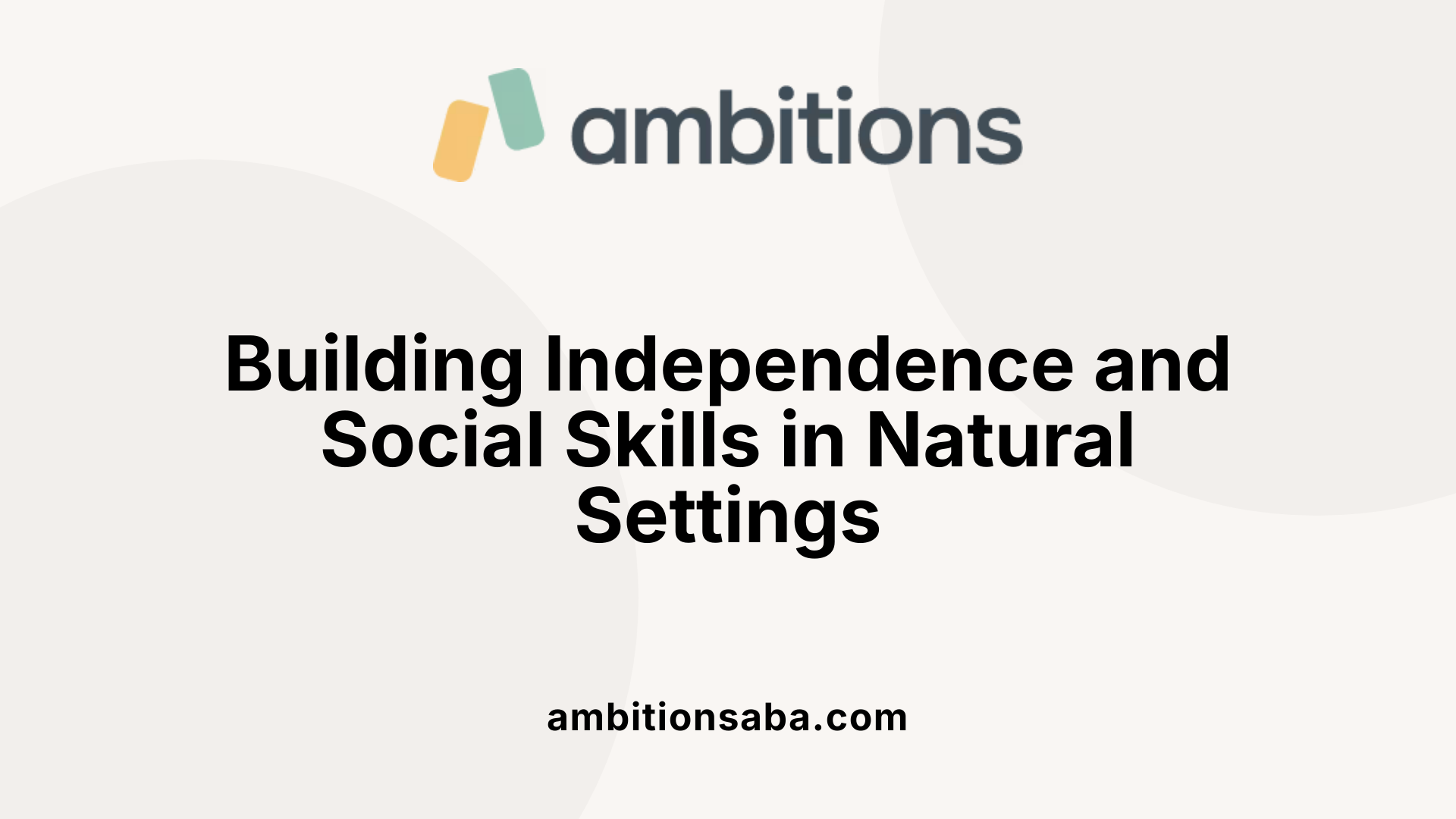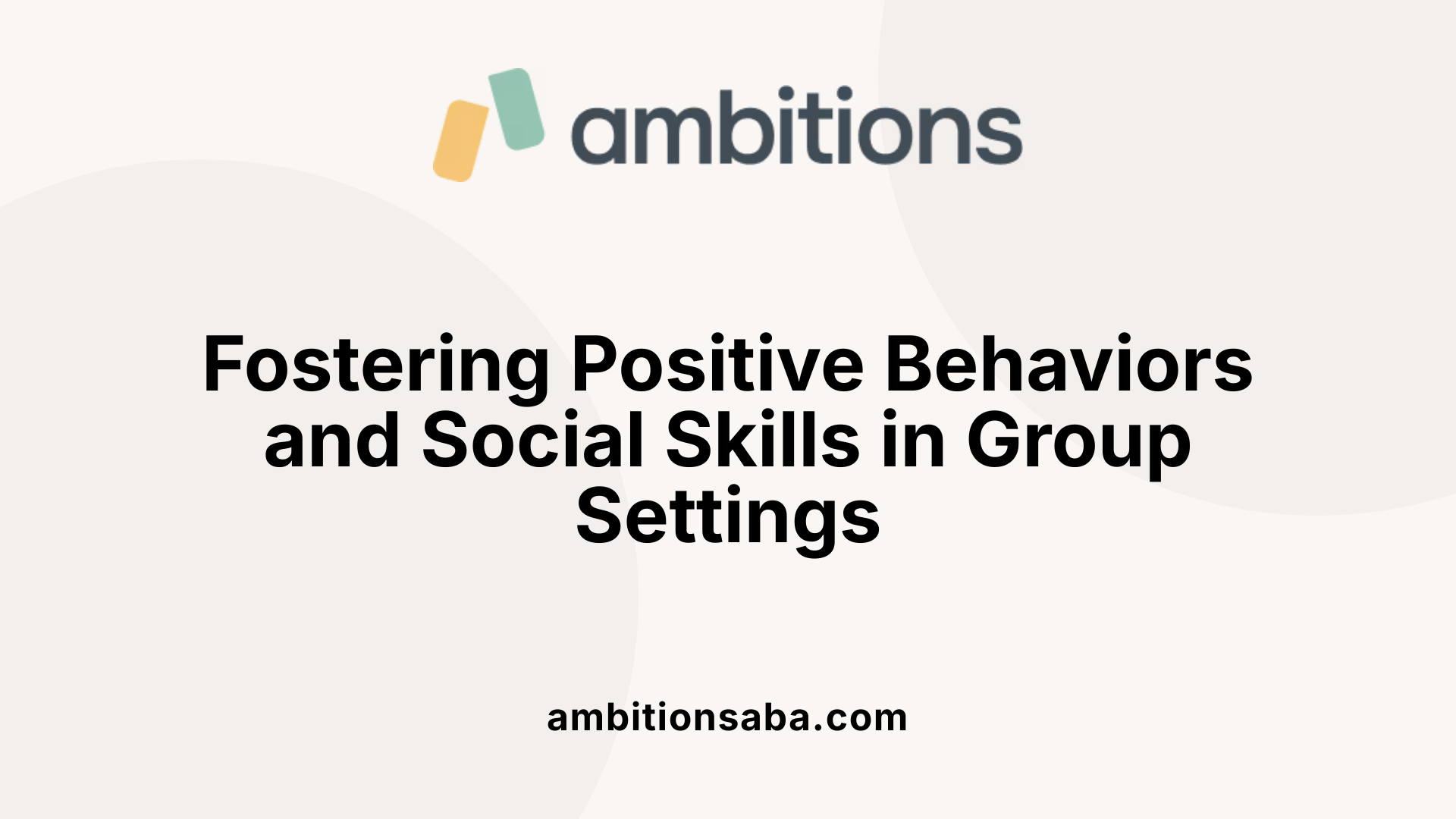Unraveling the Fascination: The Role of Trains in Autism
Understanding How ABA Facilitates Successful Community Outings
Community outings serve as vital opportunities for children with autism to develop social skills, independence, and practical life abilities. Applying Applied Behavior Analysis (ABA) strategies in these real-world settings can greatly enhance the effectiveness of these experiences, fostering greater social inclusion and community participation. This article explores comprehensive methods to implement ABA during community outings, ensuring meaningful and positive experiences for children and their families.
The Foundation of Community-Based ABA Therapy

What is community-based ABA therapy?
Community-based ABA therapy is a hands-on approach where Applied Behavior Analysis (ABA) services are provided in natural, everyday environments like parks, shopping malls, schools, and recreational centers. This setting allows children with autism to practice skills where they actually use them, making learning more meaningful and effective.
By working in familiar surroundings, children can better generalize their skills — meaning they learn to apply what they've been taught across different places, people, and situations. This real-world practice helps children grow more independent, confident, and engaged in their communities.
Trained professionals such as Registered Behavior Technicians (RBTs) and Board Certified Behavior Analysts (BCBAs) are essential for guiding children through these outings. They supervise activities, provide instructions, and support children in developing social skills, adaptive behaviors, and daily living skills.
Overall, community-based ABA focuses on meaningful participation, social inclusion, and promoting greater autonomy for children with autism in their everyday environments.
Applying ABA Strategies Effectively During Community Outings

How can ABA be effectively applied during community outings for individuals with autism?
Applied Behavior Analysis (ABA) can play an essential role in supporting children with autism during community outings. Practicing communication, social interaction, and independence in real-world environments helps children apply skills learned in therapy outside of clinical settings.
To do this effectively, therapists and parents use several strategies. Reinforcing positive behaviors with preferred items or activities motivates children and encourages cooperation. Modeling and prompting help children learn expected behaviors, especially when combined with social stories or visual schedules that clarify what is expected.
Gradually increasing the complexity and duration of outings allows children to build confidence and competence, making the experience less overwhelming. Therapists often accompany children, providing real-time instruction and support.
Overall, the aim is to help children generalize their skills across different settings, with different people, and at varying times, which is vital for achieving independence.
What are the main goals of using ABA during community outings?
The primary goal of implementing ABA in community settings is to enable children with autism to practice and reinforce their learned skills in everyday environments. These outings provide a natural context for developing essential life skills such as communication, social engagement, and self-management.
By applying ABA techniques like positive reinforcement, visual supports, and structured routines, children gain confidence and reduce anxiety associated with unfamiliar environments. The broader objective is to foster greater independence, reduce challenging behaviors, and promote social integration.
This approach not only improves the child's functional abilities but also enhances their overall quality of life by making everyday activities more manageable and enjoyable.
Behavior Management and Promoting Positive Social Skills in Outings

How can ABA strategies promote positive behavior and social skills in group settings?
Applied Behavior Analysis (ABA) employs systematic, evidence-based techniques to encourage positive behaviors and social skills in children during group settings like community outings. These strategies include positive reinforcement, where children are motivated by preferred items or activities when they exhibit desired behaviors, making the experience rewarding and encouraging repetition.
Task analysis helps break down complex social behaviors into manageable steps, making them easier for children to learn and generalize across different environments. Functional behavior assessments identify the reasons behind challenging behaviors, guiding tailored interventions to address specific needs.
Visual supports such as schedules, social stories, and goal-tracking tools provide clear expectations, helping children understand what to do and feel more secure. Ongoing data collection and progress monitoring allow therapists and caregivers to adapt strategies effectively. Moreover, involving parents and caregivers in training and home reinforcement ensures that learned skills are practiced consistently, promoting mastery and adaptability across settings.
Collaborating with a team of professionals, including Board Certified Behavior Analysts (BCBAs), ensures interventions are personalized, data-driven, and responsive to the child's development, ultimately fostering a supportive environment where social and behavioral growth can thrive.
How can challenging behaviors during outings be managed effectively?
Handling challenging behaviors calmly is essential during outings to ensure safety and maintain a positive atmosphere. Neutral, non-reactive responses help avoid escalating behaviors, while redirection steers the child's attention toward appropriate activities or alternative behaviors.
Teaching functional communication skills enables children to express needs or discomfort in acceptable ways, reducing the likelihood of tantrums or refusals. For example, teaching a child to say
Preparation and Planning for Successful Outings Using ABA
How can community outings be prepared and structured using ABA principles?
Community outings for children with autism can be effectively planned using Applied Behavior Analysis (ABA) strategies. The process begins with setting specific, achievable goals that focus on social skills, communication, and behavior management tailored to the child's needs.
Creating visual supports, such as schedules or social stories, helps the child understand upcoming activities and expected behaviors. These tools provide clear structure and predictability, reducing anxiety and promoting cooperation. Practicing routines in controlled settings or through role-play further builds confidence.
During the outing, antecedent modifications like visual cues or sensory supports prepare the child for transitions and environmental stimuli. Positive reinforcement, such as praise or preferred items, encourages engagement and appropriate behavior. Taking data on the child's responses allows caregivers and therapists to evaluate progress and adjust strategies accordingly.
Involving parents, caregivers, and community staff in training ensures consistency across settings and enhances skill generalization. This collaborative approach maximizes the success of community outings and fosters the child's skills across multiple environments.
What preparations are essential for community outings involving children with autism?
Prior to heading out, parents should develop a clear agenda that outlines the trip's itinerary, including specific activities and potential challenges. Using visual supports and providing verbal cues help prepare the child for what to expect. Giving the child simple tasks during outings, like holding a bag or pointing to items, increases engagement and focus.
Gradually increasing trip durations allows the child to adapt to longer outings without becoming overwhelmed. Bringing comfort items, such as a favorite toy or blanket, can soothe anxiety.
Starting with familiar locations before exploring new places helps build confidence and reduces sensory overload. Collaborating with ABA providers to rehearse relevant skills, like navigating crowds or using social greetings, further improves readiness.
Involving community staff and practicing the routines in nearby controlled environments also contributes to smoother outings. These preparations create a foundation for positive experiences, promote learning, and foster independence in community settings.
Maximizing Benefits and Ensuring Success in Community Outings
Implementing ABA strategies effectively during community outings requires careful planning, collaboration, and consistent application of evidence-based techniques. By using visual supports, reinforcement, priming, and behavior management strategies, parents and professionals can create positive, enriching experiences that not only promote skill development but also foster independence and confidence. With systematic preparation and ongoing assessment, community outings can serve as powerful opportunities for children with autism to generalize learned skills, improve social interactions, and participate fully in their communities, thereby enhancing their quality of life.
References
- Navigating Community Outings: Strategies for Success
- Community Outings - Bright Mosaic Autism Centers
- How to Use ABA Strategies in Public Settings
- Preparing for Community Outings: ABA Tips for a Smoother ...
- Community Based ABA Therapy - Bluesprig Autism
- What is Community-Based ABA Therapy? - Bluesprig Autism
- Applied Behavior Analysis (ABA) | Autism Speaks
- ABA Intervention for Autism: Prepare Your Kids For School
- Autism Acceptance Month: How ABA Therapy Promotes Inclusion
- How to Track Progress in ABA Therapy Through Reports and Parent ...

